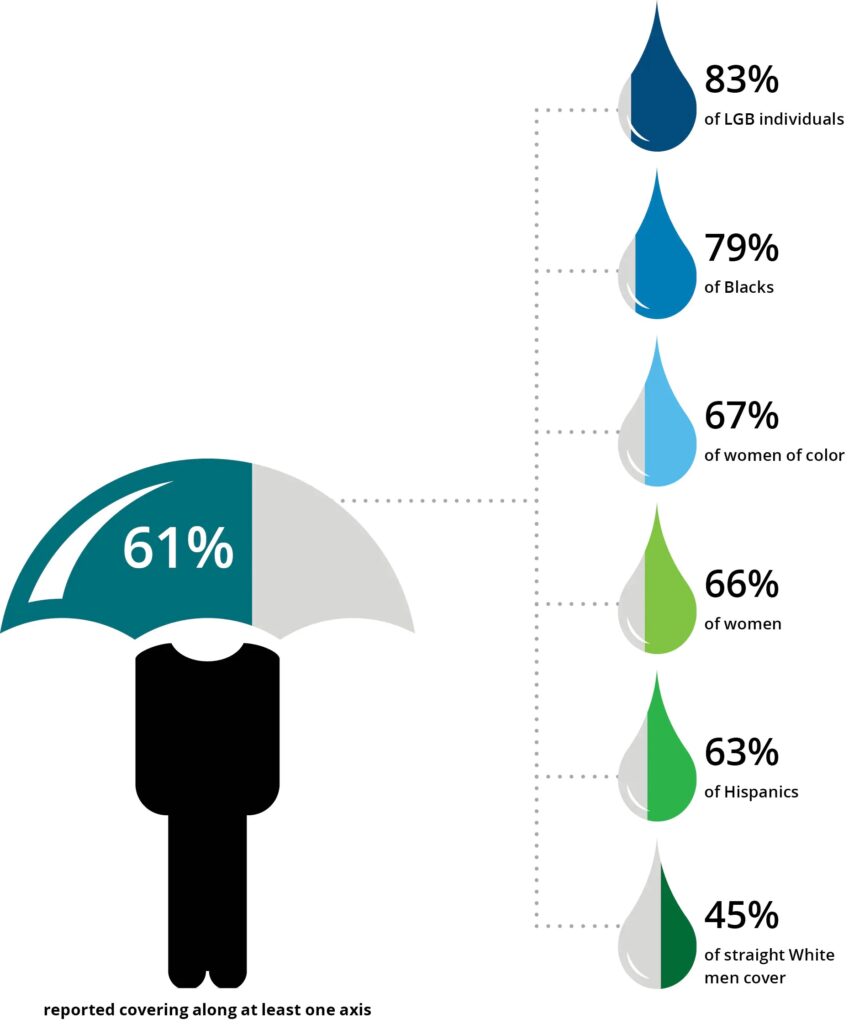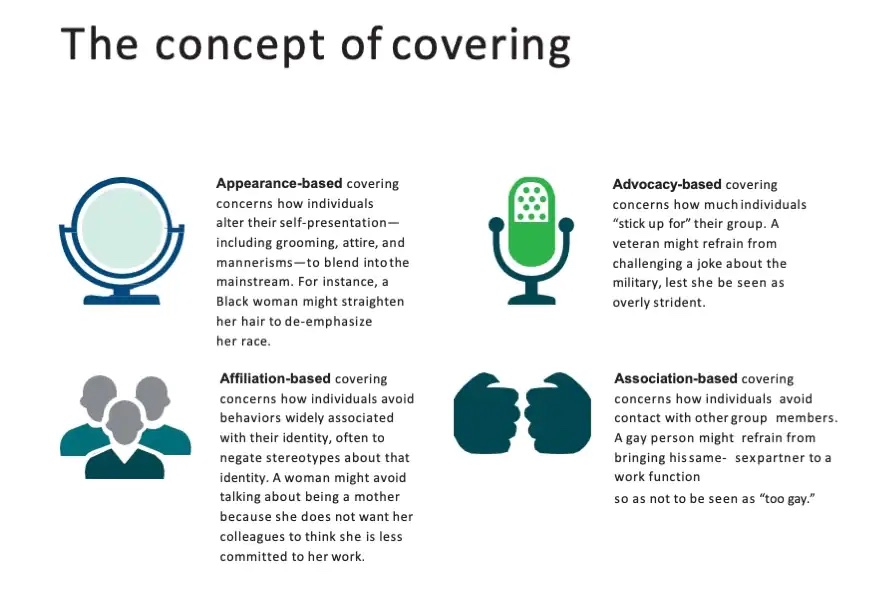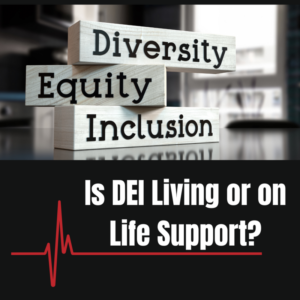Almost 50% of white men DO IT. Women DO IT. It’s part of everyday life for people of color and the LGBTQ+ community. Franklin Delano Roosevelt DID IT by sitting behind a desk when advisors came in, so as to downplay his wheelchair. Michael J. Fox DOES IT by timing interviews and personal appearances when his medications are at their peak to minimize his symptoms. Black women DO IT when they straighten their hair, and parents DO IT when they leave the office for “appointments” at 3pm.
What is everyone doing? What are we talking about?
We’re talking about covering, a strategy that we use to hide or downplay things about ourselves, particularly those aspects of our identity that mark us as different from the “mainstream”. The concept of “covering” first appeared in Erving Goffman’s 1963 book “Stigma,” but the modern expert is Kenji Yoshino, who partnered with Deloitte University, and researched employees at 220 Fortune 500 companies. Results from this study show that covering impacts employees across the spectrum.

The world today is filled with contradictions. We hear that diversity is “important.” Yet everyone wants to fit in. Differences, represented as cultural, physical or racial as an example, may present challenges to fitting in and leave individuals vulnerable to potential negative effects of bias. For many, covering attempts to minimize or hide our individual differences, but it can also sabotage a company’s diversity goals.
Covering can show up in several different ways:

Many people report feeling pressure to cover from both company leadership and the office culture which send subtle and not so subtle messages that covering is important for their long-term professional advancement. For example, feedback to “dress / speak more professionally”, important meetings scheduled on significant religious holidays, or pressure to attend “voluntary” teambuilding events outside usual business hours send the message that to be successful and not miss advancement opportunities, one has to look, sound, and be on the same calendar/ schedule as others in the group.
This means that a lot of mental and creative energy is being diverted into covering at work instead of doing one’s actual work. Although it’s common to act more reserved and professional at work, when the gap between your personal self and your professional/public self is large, it can be draining. For many, covering is a regular part of their daily work routine but they do so at the high cost of their sense of self and mental health. Many such employees are also more likely to burn out because the process of trying to fit in can be exhausting and dispiriting.
A truly inclusive workplace is one where employees do not feel pressure to cover aspects of their identity at work, especially those that affect how we think, act, and make decisions. When employees are hiding or downplaying core aspects of their identity it is a symptom of a lack of trust to show their true selves.
The best way to prevent covering is to foster an environment of safety and inclusion.
- Look at your formal and informal practices regarding coaching and performance management. Do you have competencies or performance expectations that may subtly encourage people to assimilate rather than value diversity?
- Leaders sharing their personal stories of covering shows human vulnerability and invites others to be more open. Most people have covered at some point in their career, and it permits a new dialogue on your team about differences.
- Recognizing that everyone has differences, and those differences represent only a part of who we are as individuals.
- Tackle underrepresentation at all levels, which can make even the slightest cultural “difference” more noticeable. As we know, representative diversity alone is not enough, organizations need to create inclusive environments for employees to feel comfortable enough to “uncover” and bring their authentic selves to work.
- Tackle underrepresentation at all levels, which can make even the slightest cultural “difference” more noticeable. As we know, representative diversity alone is not enough, organizations need to create inclusive environments for employees to feel comfortable enough to “uncover” and bring their authentic selves to work.
Start with yourself. Is there an identity that is important to you that you may be hiding or downplaying in the workplace? By bringing more of yourself to the table, you may encourage others to do the same.




